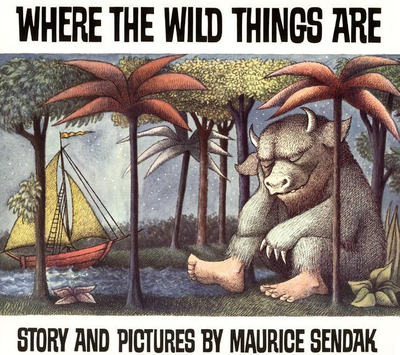Where the Wild Things Are is one of those rare books (along the lies of Dahl, Dr. Seuss…) that can be enjoyed equally by a child and a grown-up.
Max dons his wolf suit in quest of some mischief and gets banished to bed without supper. Fortuitously, a forest grows within the confines of his room, allowing his wonderful wild rampage to continue unhindered. Sendak’s color illustrations are blissful, and each turn of the page brings the discovery of a new wonder.
The wild things with their mysteriously mismatched parts and adorable giant eyes manage somehow to be scary-looking without ever really being disconcerting and at times they’re downright hilarious. Sendak’s defiantly run-on sentences lend the perfect touch of stream of consciousness to the tale, which floats between the land of dreams and a child’s imagination.
Children can really identify with Max and his rebellious thoughts. Upon banishment to his room for misbehavior, his imagination helps him to run away to where the wild things are and collect his thoughts. Sendak certainly remember what its like to be a child and feel like no one understands what you are basically feeling, and not quite understanding yourself. Ruling the wild things helps Max understand that he just wants to feel loved, and helps parents to keep in mind that such outbursts from children are essentially cries for attention – for someone to just love them. Mr. Sendak understands children! When you read this book it will transport you back to your own childhood and you will remember that lost feeling of being a child.



<img src="



